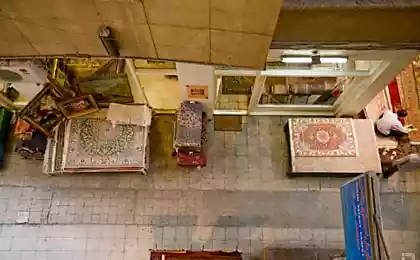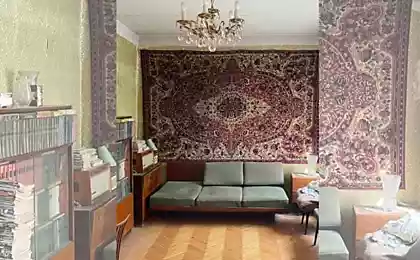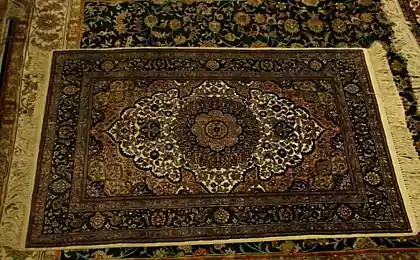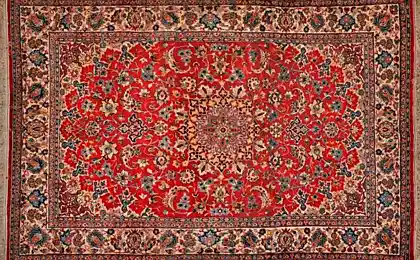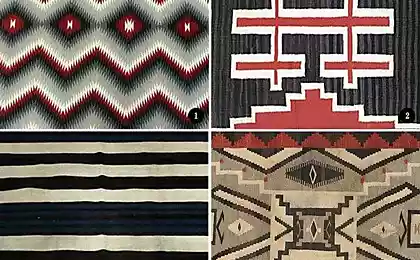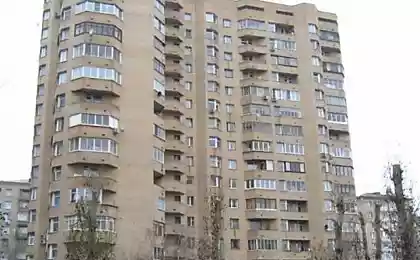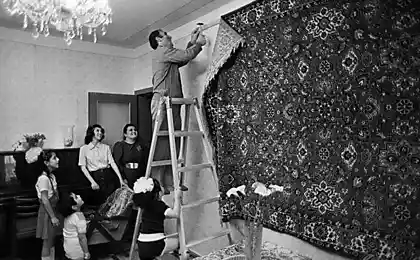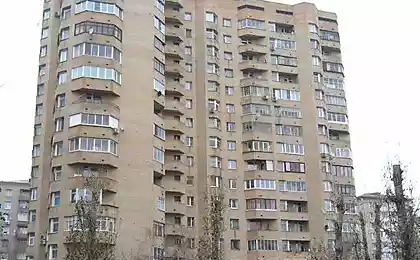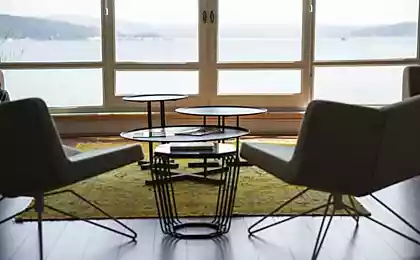270
Why every Soviet apartment hung a carpet on the wall and where did this fashion come from?
I have the warmest memories of carpets on the walls because they come from childhood. It’s hard to find a carpet on the wall, especially if you’re not visiting your grandmother. It is even strange that such a global trend has almost completely sunk into oblivion, also earning an unflattering reputation. In the 2000s, it was believed that this is not just a relic of the past, but also a demonstration of bad taste. Everyone tried to make repairs in a European way. But the wheel of time spins tirelessly, and some have already regretted throwing away Soviet old things - it's time to remember why it is worth returning. living-carpet.
You've never wondered why. carpets in Soviet times Were they so popular? There were at least 5 reasons for this, but only one of them has remained relevant to the present day. Moreover, not only preserved, but also multiplied. Guess which one?
Why it was so important to buy a living room carpet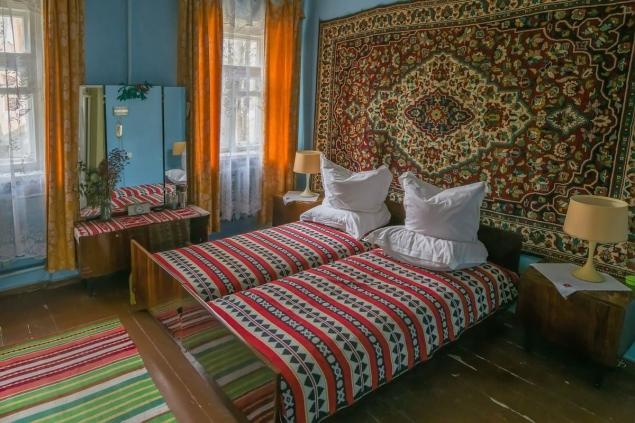
Frankly, carpets were hung not only in living rooms, but also in bedrooms. The only place in the house where this was inappropriate was the kitchen (for practical reasons). In all other cases, the carpet was simply necessary. Let's remember what kind of cases these are and which one might make you check the closet for the presence rug.
The Old Khrushchevs were built quickly and, unfortunately, not always qualitatively. The unevenness of some walls was not hidden even by colorful wallpaper, and the cost of leveling was high then, as in our days. She also took up a lot of time! And installation carpet It took half an hour.
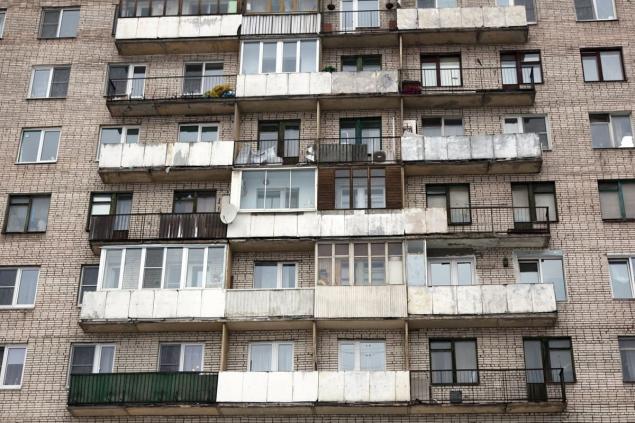
And, if we already remembered about wallpaper, getting them at that time was very difficult. Many apartments inside were decorated with bare plaster. And if it was possible to get a roll of decent size, then it had to be sculpted with poor-quality or even manually welded glue. The wallpaper spread even before it was brought to the wall. Therefore, gluing had to be fast and, as a result, not always smooth. So 50 years ago. rugs Often hidden or uneven walls, or plaster, or some error.
Behind the thin walls it was perfectly audible what the neighbors say. But the carpet eliminated this annoying misunderstanding. By the way, this property of carpets nowadays is used by rock bands. To this day, their rehearsal studios are hung and covered with carpets, because they have a great job. noise suppression.

In old houses, not only thin walls, but also drafts. In the past, central heating was not enough for everyone. This problem in winter was especially terrible for residents of corner apartments. But the carpet on the wall solved it well at the same time. draft-proof And keeping the house warm. Sleeping against a wall covered by a carpet was much more comfortable.
Carpet in the living room and a special aesthetic Measure with carpets was in the order of things: who has it cooler, newer, more exotic, more expensive. It was kind of like collecting stamps, but on a different level. But if you think about it, the tradition of hanging a house with carpets is very ancient, it is not one thousand years old. We borrowed it. easternNot only did they make the house so comfortable, but they also made it soft.

And finally, the most important reason why our grandparents loved carpets so much is status! Carpets were not something you could afford to buy every day. The cost of a good carpet was often equal to several monthly salaries. With an average income of 120 rubles a month, a good carpet cost 400 or 500 rubles. hand-woven Often reached the price tag of 800 and 1000 rubles. Even then it was considered a profitable investment, which was customary to keep in sight. A cheaper carpet was usually laid on the floor, and the more expensive one went to the wall.

The carpet was a wonderful gift for the newlyweds. In addition, carpets were considered a good dowry and valuable inheritance They were passed down from generation to generation. So, we can say, this piece of interior was an indicator of family well-being and it cost a lot. This was the case in ancient times and in part even today.
Of course, not every carpet has a sky-high price, but many of them. Especially those from the previous generation. Determining whether your carpet is worth a lot of money is pretty simple. First, it should be made of natural materials, preferably wool. Secondly, he is at least 40 years old. Such a carpet, if it was released in a small circulation, can be safely sold for $ 500.

Manual work is always valued higher, but only a specialist from an antique shop will help determine it. Rare decorative carpets from Azerbaijan, for example, go under the hammer for $1,000. And some large and well-preserved Soviet-era carpets cost $2,000. Connoisseurs of this type of antiques advise not to put carpets for sale on the Internet, but to participate in live auctions, where real connoisseurs come.
Of course, these are not the red-brown carpets on which we looked at patterns as children. But one of the top three Dutch designers, Pete Hein Ek, uses carpets, turning them into something between soft flooring and furniture. Flat carpets he considers too banal, but carpet furniture and carpet walls - why not? Another designer with Oriental roots, Roderick Vos, collects pieces of carpets, stitching together into a single whole.
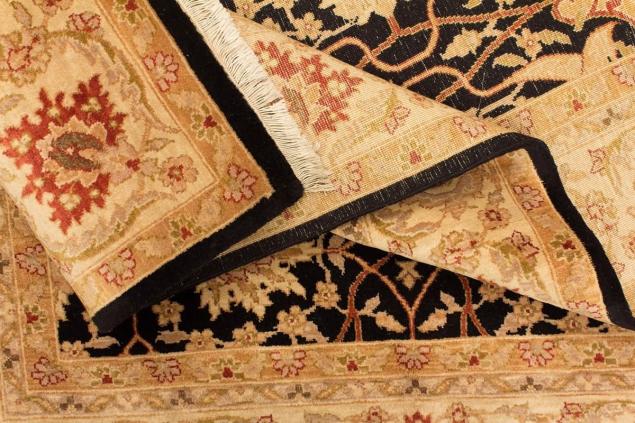
Such maestros as the brothers Burulleki and Ross Lovegrove walked on the carpets in their time. During Milan Design Week a couple of years ago, a whole collection of fashion carpets was presented! And this is only the tip of the iceberg, because the soft interior item has returned to modern design. Again, the trend is a combination of wooden flooring and a cozy carpet on the wall or on the floor.
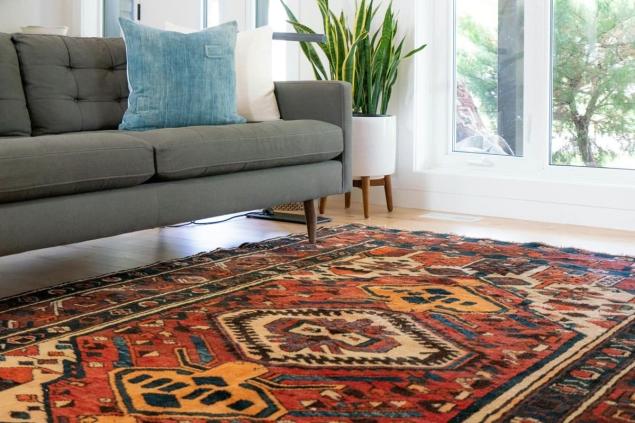
It turns out that buying a carpet in a dowry daughter, the Soviet grandmother could make a profitable investment. The problem is only the specificity of storage of such products. The carpet on the wall, of course, is better. But regular cleaning and careful storage are essential if you want to keep your “assets” until they rise in value.
You've never wondered why. carpets in Soviet times Were they so popular? There were at least 5 reasons for this, but only one of them has remained relevant to the present day. Moreover, not only preserved, but also multiplied. Guess which one?
Why it was so important to buy a living room carpet

Frankly, carpets were hung not only in living rooms, but also in bedrooms. The only place in the house where this was inappropriate was the kitchen (for practical reasons). In all other cases, the carpet was simply necessary. Let's remember what kind of cases these are and which one might make you check the closet for the presence rug.
The Old Khrushchevs were built quickly and, unfortunately, not always qualitatively. The unevenness of some walls was not hidden even by colorful wallpaper, and the cost of leveling was high then, as in our days. She also took up a lot of time! And installation carpet It took half an hour.

And, if we already remembered about wallpaper, getting them at that time was very difficult. Many apartments inside were decorated with bare plaster. And if it was possible to get a roll of decent size, then it had to be sculpted with poor-quality or even manually welded glue. The wallpaper spread even before it was brought to the wall. Therefore, gluing had to be fast and, as a result, not always smooth. So 50 years ago. rugs Often hidden or uneven walls, or plaster, or some error.
Behind the thin walls it was perfectly audible what the neighbors say. But the carpet eliminated this annoying misunderstanding. By the way, this property of carpets nowadays is used by rock bands. To this day, their rehearsal studios are hung and covered with carpets, because they have a great job. noise suppression.

In old houses, not only thin walls, but also drafts. In the past, central heating was not enough for everyone. This problem in winter was especially terrible for residents of corner apartments. But the carpet on the wall solved it well at the same time. draft-proof And keeping the house warm. Sleeping against a wall covered by a carpet was much more comfortable.
Carpet in the living room and a special aesthetic Measure with carpets was in the order of things: who has it cooler, newer, more exotic, more expensive. It was kind of like collecting stamps, but on a different level. But if you think about it, the tradition of hanging a house with carpets is very ancient, it is not one thousand years old. We borrowed it. easternNot only did they make the house so comfortable, but they also made it soft.

And finally, the most important reason why our grandparents loved carpets so much is status! Carpets were not something you could afford to buy every day. The cost of a good carpet was often equal to several monthly salaries. With an average income of 120 rubles a month, a good carpet cost 400 or 500 rubles. hand-woven Often reached the price tag of 800 and 1000 rubles. Even then it was considered a profitable investment, which was customary to keep in sight. A cheaper carpet was usually laid on the floor, and the more expensive one went to the wall.

The carpet was a wonderful gift for the newlyweds. In addition, carpets were considered a good dowry and valuable inheritance They were passed down from generation to generation. So, we can say, this piece of interior was an indicator of family well-being and it cost a lot. This was the case in ancient times and in part even today.
Of course, not every carpet has a sky-high price, but many of them. Especially those from the previous generation. Determining whether your carpet is worth a lot of money is pretty simple. First, it should be made of natural materials, preferably wool. Secondly, he is at least 40 years old. Such a carpet, if it was released in a small circulation, can be safely sold for $ 500.

Manual work is always valued higher, but only a specialist from an antique shop will help determine it. Rare decorative carpets from Azerbaijan, for example, go under the hammer for $1,000. And some large and well-preserved Soviet-era carpets cost $2,000. Connoisseurs of this type of antiques advise not to put carpets for sale on the Internet, but to participate in live auctions, where real connoisseurs come.
Of course, these are not the red-brown carpets on which we looked at patterns as children. But one of the top three Dutch designers, Pete Hein Ek, uses carpets, turning them into something between soft flooring and furniture. Flat carpets he considers too banal, but carpet furniture and carpet walls - why not? Another designer with Oriental roots, Roderick Vos, collects pieces of carpets, stitching together into a single whole.

Such maestros as the brothers Burulleki and Ross Lovegrove walked on the carpets in their time. During Milan Design Week a couple of years ago, a whole collection of fashion carpets was presented! And this is only the tip of the iceberg, because the soft interior item has returned to modern design. Again, the trend is a combination of wooden flooring and a cozy carpet on the wall or on the floor.

It turns out that buying a carpet in a dowry daughter, the Soviet grandmother could make a profitable investment. The problem is only the specificity of storage of such products. The carpet on the wall, of course, is better. But regular cleaning and careful storage are essential if you want to keep your “assets” until they rise in value.
The terrible prediction of astrologer Baiba Sturite for 2024, everyone will not be easy
Chestnut cookie recipe from an old notebook, childhood memories come back in a flash
